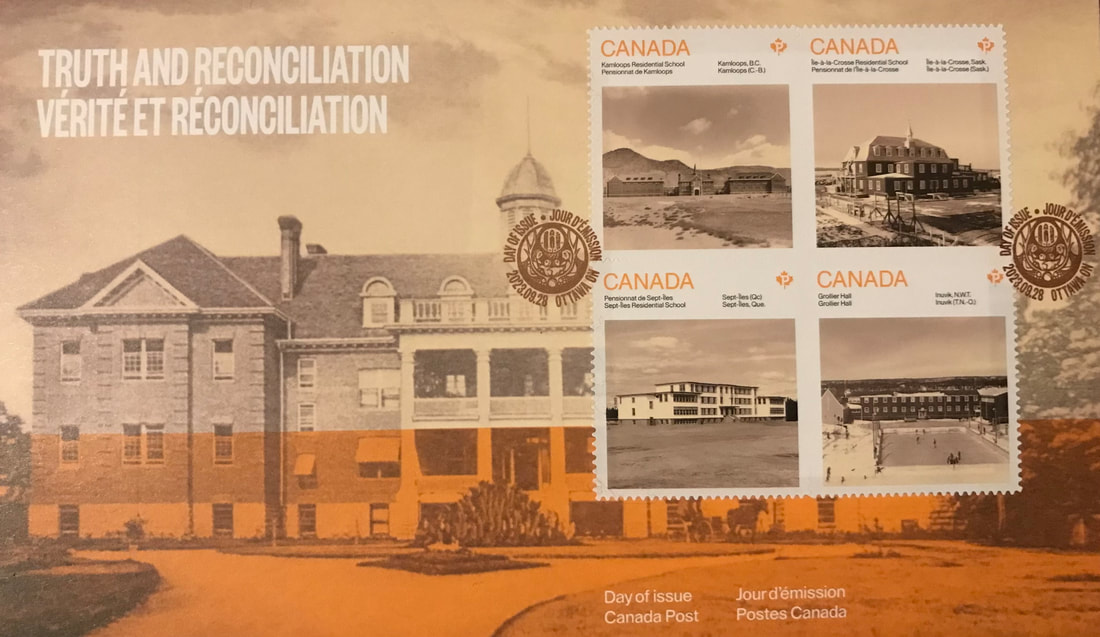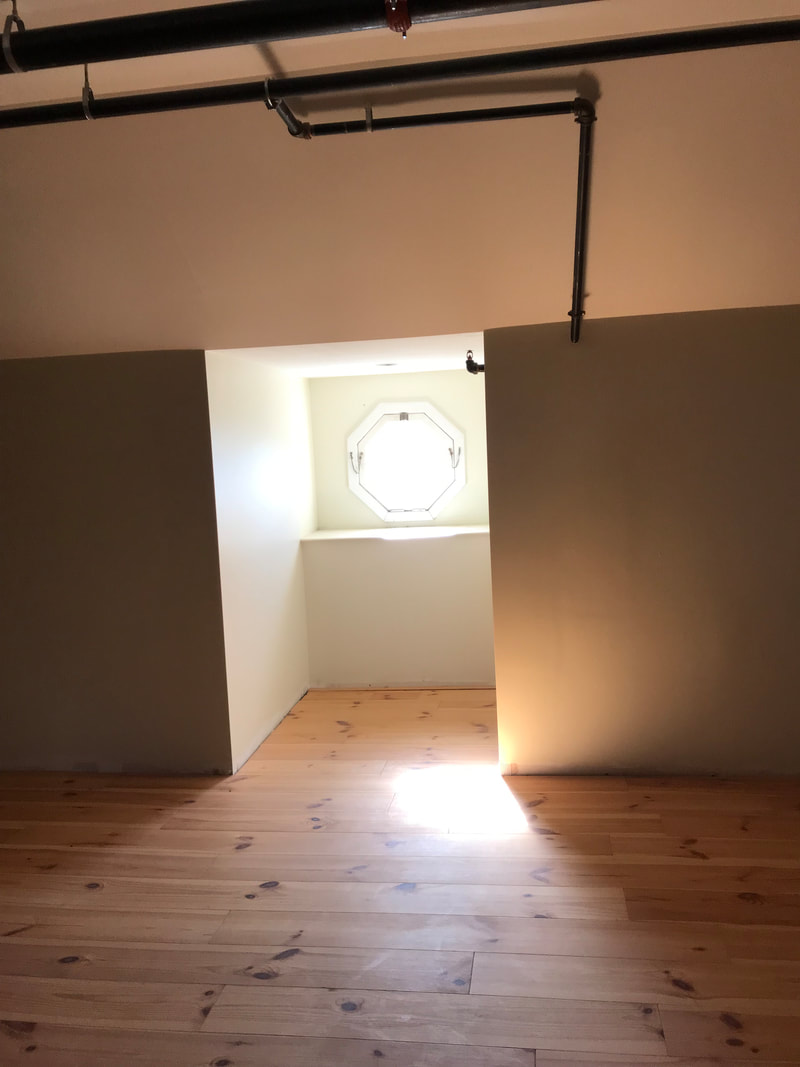On Wed. Sept. 27, 2023, along with Canada Post, Woodland Cultural Centre in Brantford, Ontario held the Truth and Reconciliation Stamp Launch. This was the second stamp in a series commemorating the National Day for Truth and Reconciliation. In 2022, artists of Inuit, Metis and First Nations captured their visions for the future of truth and reconciliation.
Assistant Manager of the Language Department, George Dextor, presented remarks on the natural forces. Christopher prepared the audience of the short video of members of the Survival Circle, National Centre for Truth and Reconciliation. Anyone who would become distressed could speak to councillors who would be available if needed.
There were a few Residential Survivors in the audience. John who escaped over 30 times and Dawn Hill who spoke briefly about what life was like attending residential school. She was separated from her sister and the children were encouraged to fight to create dissension and prevent friendships.
As a Residential School Survivor, Phylis never had her shirt nor other belongs returned to her. “Residential school is the only school you don’t graduate from, you survive,” said Heather George. She further remarked that "truth and reconciliation is not easy. Truth requires dark history caused by pain." Heather mentioned how the name Canada came from the Iroquoian word ‘Kanata’ meaning village. “The work of Canada Post is part of the healing.”
Another guest speaker was Dr. Criag Fraser, Elected Council of Six Nations of the Grand River, who was a stand in for Chief Mark Hill. Dr. Fraser toured the residential school after 50 years. He mentioned he had family members who attended the school, the results of the abuse his uncles endured related to alcoholism.
“Reconciliation means different things to different people. ReconciliACTION, we need to do rather than say.” For example, Dr. Fraser explained how the University of Waterloo is taking initiative after realizing that only 44% of Indigenous population graduates and half take five years to complete a four-year program. As a result, the university is waiving the tuition fee for Indigenous students and University of Toronto may follow.
Director of Indigenous and Northern Affairs Canad Post, Dale LeClair, reported “we have to reflect on the past.” His father spent three years in residential school before being pulled out by his mother. While touring the Mohawk Institute Residential School, he had such a heavy heart. “The school was designed to assimilate Indigenous children into society who were subjected to unimaginable things. The school closed in 1972, remembering the truth and learning from it.”
Canada Post is listening to the voices of Residential School Survivors and worked closely with the Survivors Circle of the National Centre for Truth and Reconciliation to come up with the Truth and Reconciliation stamp issue this year. “The stamps tell an important part of history to heal and embrace a stronger future.”
- Kamloops Residential School, Kamloops, B.C.
- Île-à-la-Crosse Residential School, Île-à-la-Crosse, Sask.
- Sept-Îles Residential School, Sept-Îles, Que.
- Grollier Hall, Inuvik, N.W.T.
- Mohawk Institute, Brantford, Ont.
- Ermineskin Residential School, Maskwacis, Alta.
- Turquetil Hall, Chesterfield Inlet, Nunavut
- Shubenacadie Residential School, Shubenacadie, N.S
According to Canada Post: "the stark archival images of these institutions serve as a reminder of the fear, loneliness, pain and shame endured by generations of Indigenous children experienced within their walls." Furthermore: "The stamp issue serves as a vehicle for truth about Canada's residential school system to help support the process of reconciliation and, ultimately, healing.”
She led the group under the stairs where runaways, like John, were kept when they were returned to the faculty. A bed in small dark closet where a child would be kept for days on end. Heather stated that John's friends would shove pieces of bread under the door to feed him.
Like Dale LeClair, I too had a ‘heavy heart’ after touring the Institute. I have attended numerous functions and events over the years at Woodland Cultural Centre, but this was my first time touring inside the Mohawk Institute in person. It is a different experience watching the video when you are in the personal spaces.
It hits home too of the devastation, that continues to be felt in Aboriginal communities through intergenerational trauma, of the atrocity’s that First Nations, Inuit and Métis Nation children endured for over 150 years when the Mohawk Institute Resident School opened in 1831 until the closing of the last residential school in 1981. More than 150,000 children attended one of the eight Indian Residential Schools located throughout Canada’s provinces and territories. Canadians do need to know about the ‘dark history’ of residential schools to ensure it never happens again and to allow for Residential Survivors and their Aboriginal communities, to deal with their trauma which hopefully will lead to their healing.
(Photos taken by Heather A. Rennalls)
Related links:
- National Centre for Truth and Reconciliation
- The Gord Downie & Chanie Wenjack Fund
- National Film Board of Canada
- Learn with Your Head, Lead from the Heart & Speak Your Truth: Teaching Young Children about Residential Schools
- Download the Education Guide
- Intergenerational Resilience: Sharing Stories from Families of Residential School Survivors
- Download the Education Guide
- Residential Schools in Canada
- Indian Residential Schools
- Residential School
- National Day for Truth and Reconciliation
- The National Residential School Crisis Line 1-866-925-4419












 RSS Feed
RSS Feed
